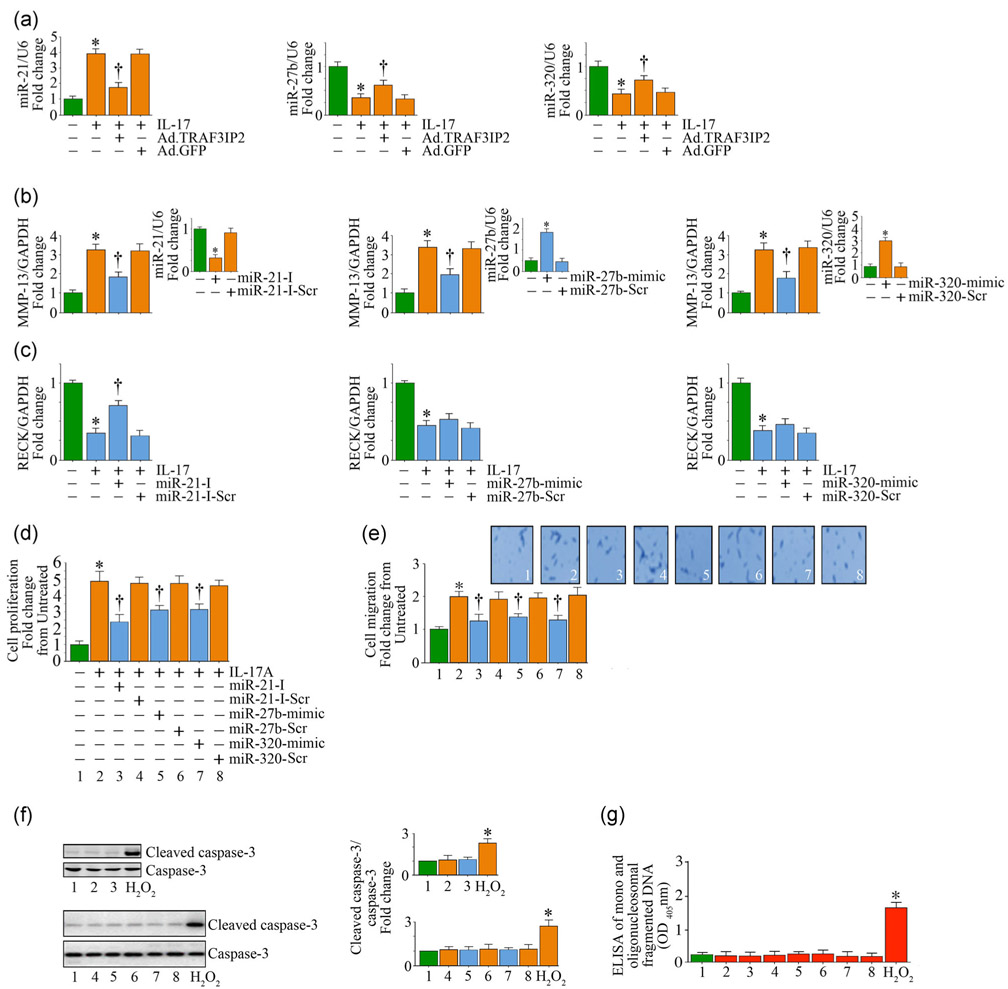FIGURE 5.
IL-17A differentially regulates MMP-13 and RECK in SMC by modulating miRNA expression. (a) IL-17A induces miR-21, but suppresses miR-27b and miR-320 expression in part via TRAF3IP2. Following adenoviral transduction of TRAF3IP2 shRNA, SMC were treated with IL-17A and analyzed for miRNA expression after 2 hr by advanced miRNA assays. (b,c) Forced expression of miR-21 inhibitor or miR-27b and miR-320 mimics blunt IL-17A-induced MMP-13 expression (b), but reverse RECK suppression (c). SMC transduced with the miR-21 inhibitor or miR-27b and miR-320 mimics for 48 hr were treated with IL-17A, and analyzed for MMP-13 (b) or RECK (c) expression by RT-qPCR. Insets show the efficacy of inhibitor or mimics on the expression of respective miRNA. (d-g) microRNA mimic and inhibitors reverse IL-17A-induced SMC proliferation (d) and migration (e) without affecting cell viability. Insets in (e) show images of cells migrated to the other side of the Matrigel™ basement membrane. Cell death was analyzed by immunoblotting using antibodies that detect active and total caspase-3 levels (f) and ELISA that quantifies mono- and oligonucleosomal fragmented DNA in cytoplasmic extracts (g). (f) The intensity of immunoreactive bands from three independent experiments is semiquantified by densitometry and summarized in the right-hand side panels. ELISA: enzyme-linked immunosorbent assay; GFP: green fluorescent protein; IL: interleukin; MMP-13: matrix metalloproteinase-13; RECK: reversion-inducing cysteine-rich protein with kazal motifs; RT-qPCR: quantitative reverse transcription polymerase chain reaction; shRNA: short-hairpin RNA; SMC: smooth muscle cell; TRAF3IP2: TRAF3 Interacting Protein 2. *p < at least 0.01 versus untreated; †p< at least 0.01 versus IL-17A

